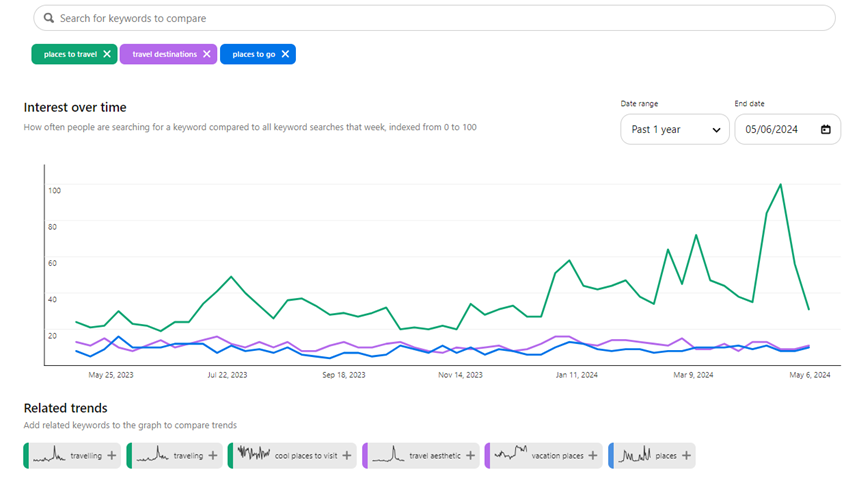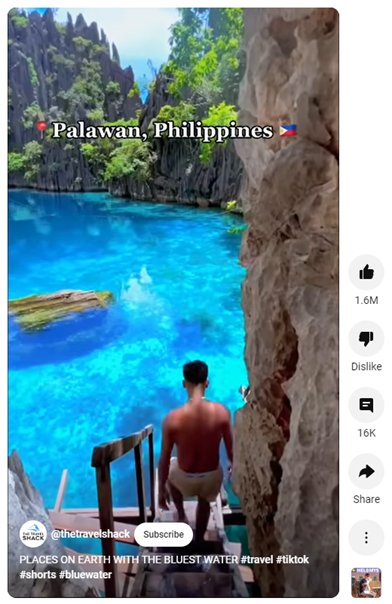

Last updated on

Our travel blogger partners have been significantly impacted by the recent Google update. Despite the hurdles it brought, we’re inspired by their ability to bounce back.
While we can’t control Google’s algorithms, we can certainly tackle what’s within our power.
Here are five proven strategies, tested by travel bloggers, to boost website traffic in the aftermath of the latest Google update.
While many perceive Pinterest as a social media platform, it operates more like a search engine.
With its array of tools, Pinterest offers an excellent opportunity to drive traffic to your website.
Pinterest revolves around imagery, making striking visuals essential. To ensure your content shines, consider these tips:

Prior to pinning, optimize your blog posts to maximize revenue and ensure every visitor counts. Explore our guide, “Ten Tips for Maximizing Revenue for Travel Bloggers,” for detailed insights.
The significance of email marketing lies in its ownership. While platforms like Instagram may suspend your account and Google could lower your ranking, your email list remains under your control.
Adopt this approach to cultivate stable, dependable traffic rather than solely focusing on acquiring new visitors.
Choose an email marketing service provider. Many travel bloggers recommend MailerLite and MailChimp for their affordability and user-friendly interfaces.
Begin building your email list. Set up a signup form on your website and incorporate it into your posts to gather your readers’ contact details.
Craft a compelling lead magnet to encourage readers to provide their information. Popular options in the travel blogging community include travel guides, ebooks, and itineraries.
The primary aim of email marketing is to drive traffic to your website. Keep your emails concise, featuring captivating visuals and a clear link back to your site. Entice readers to click through for more content.
Before sending emails directing traffic to your pages, ensure those pages are optimized for revenue generation. Learn how to do this in our guide, “Ten Tips for Maximizing Revenue for Travel Bloggers.”
“Though SEO is frequently hailed as the primary driver of traffic, effective email marketing reigns supreme as the absolute queen. Whenever we send emails to our audience, we consistently observe surges in our web analytics, and these spikes aren’t fleeting. They contribute to the formation of user habits. Without nurturing our email list, our business wouldn’t have achieved nearly the level of success it enjoys today.”
Beth Stanos, CEO & Founder of Wanderful
Flipboard serves as a platform for curated articles, offering users the ability to browse through content from various publications, akin to flipping through a collection of magazines.
A testimonial from Amanda O’Brien, Founder of theboutiqueadventurer.com:
“Flipboard has emerged as a significant traffic driver for all three of my websites. Their suite of creator tools, including storyboards, scheduling features, and RSS feeds for magazines, simplifies the process of crafting and sharing compelling content.”
Did you know that a staggering 77% of travelers utilize social media while planning their trips? Capture their attention by leveraging short-form videos on popular platforms such as TikTok, Instagram, and YouTube shorts.
These platforms employ sophisticated algorithms designed to showcase your content to individuals who may not even be following you, presenting an excellent opportunity for potential readers to discover your content.
Getting Started with Video Creation:

While on your travels, keep the idea of creating captivating videos in mind. When you encounter stunning scenery or intriguing environments, be prepared to capture them on video. The “wow” factor of your footage is what sets apart a mediocre video from a truly fantastic one.
For platforms like Instagram, craft detailed captions to accompany your videos. On YouTube and TikTok, aim for concise captions.
Utilize voice-overs, on-screen text, and music to enhance viewer engagement. Apps like Capcut offer easy ways to incorporate these elements into your videos.
Choose your video thumbnails thoughtfully to ensure they catch the eye amidst a grid of other content.
And remember, keep your short videos brief. Aim for around seven to eleven seconds for Reels, 21 to 34 seconds for TikToks, and 25 to 35 seconds for YouTube Shorts.
“TikTok has been instrumental in boosting our blog’s visibility on Mediavine. By sharing detailed ‘how-to’ videos and always including a call to action, we directed viewers to our blog for further information. Our viral videos, combined with prompts to visit our bio link, have generated thousands of clicks to our websites.”
Natasha Alden, Co-Founder of theworldpursuit.com
Getting your content featured on another website opens up doors to reach a fresh audience, presenting a great opportunity to engage new readers.

“Crafting content for external publications provides a platform to showcase new expertise in a particular niche. Whether through the article itself or subsequent social shares, it exposes you as a writer to a fresh audience.”
William Tang, Founder of goingawesomeplaces.com
Discover how William Tang transformed travel blogging into a full-time career with the aid of Stay22’s revenue-boosting solutions.
Original news from SearchEngineJournal